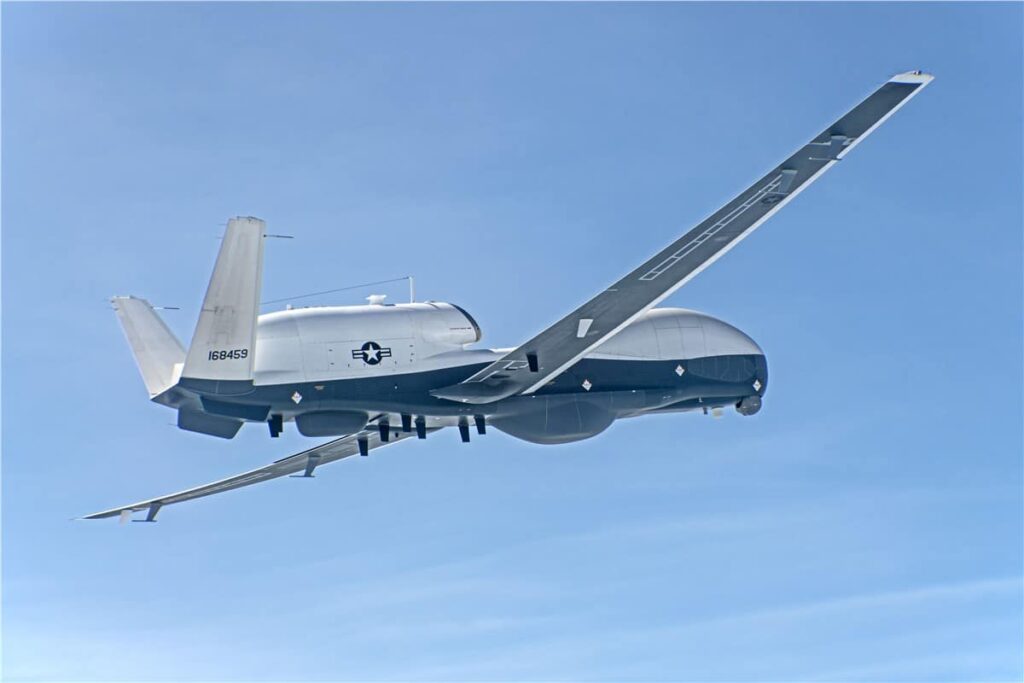Image may be NSFW.
Clik here to view.
Northrop Grumman Corporation’s MQ-4C Triton UAS (unmanned aerial system) has been flown for the first time in the aircraft’s upgraded multi-intelligence configuration known as integrated functional capability four (IFC-4). Triton is the U.S. Navy’s premier high-altitude, long-endurance (HALE), maritime intelligence, surveillance and reconnaissance (ISR) platform, and Northrop Grumman is working closely with the Navy to progress the platform toward initial operating capability (IOC) and world-wide deployments.
The U.S. Navy is currently operating two Tritons in the Pacific region in the baseline configuration as part of an early operational capability deployment. The Triton program expects to achieve IOC in 2023, and the Navy will eventually maintain five 24/7 operational orbits with a planned 68-aircraft program of record.
This multi-intelligence configuration will enable the Navy to retire the EP-3E Aries electronic signals reconnaissance aircraft, as Triton will be able to assume the intelligence collection missions currently conducted by the Aries.
Doug Shaffer, vice president and program manager for Triton at Northrop Grumman, commented: “The multi-intelligence configuration of Triton will completely revolutionize how the U.S. Navy and Royal Australian Air Force conduct maritime patrol and reconnaissance missions. Multi-intelligence capabilitiies, coupled with Triton’s long-range sensors and 24-hour endurance, will enable an unprecedented amount of maritime situational awareness to inform real-time decision making at tactical to strategic levels.”
Capt. Dan Mackin, Persistent Maritime Unmanned Aircraft Systems program manager, said: “This hugely important milestone for our Triton Multi-INT program is the culmination of over five years of intense engineering, integration and test, and represents the efforts of the hundreds of team members who have worked so tirelessly to achieve this Herculean task. The Multi-INT capability that the U.S. Navy and Royal Australian Air Force have procured through Northrop Grumman, our Naval Warfare Centers and our GFE partners is like no other – 360 degree AESA maritime radar, full-motion EO/IR video streaming, high-altitude, long-endurance, full-spectrum signals intelligence and the pipes to send multiple data types to ships, aircraft and intelligence community ground stations allow our forces to hold adversaries at risk and protect the peace which is so vital to our national interest.”
The post MQ-4C Triton UAS Completes First Multi-Intelligence Flight appeared first on Unmanned Systems Technology.
